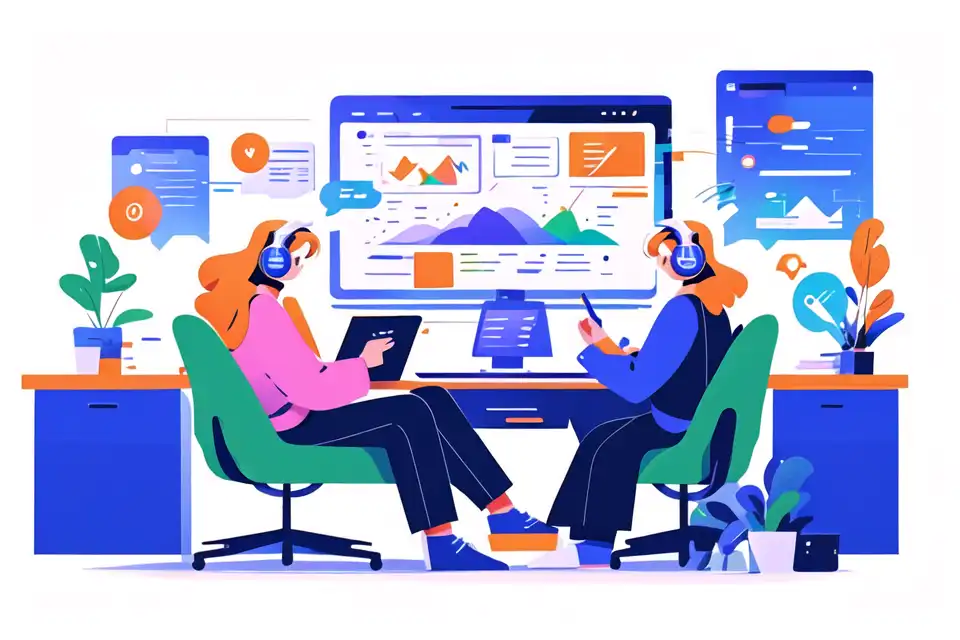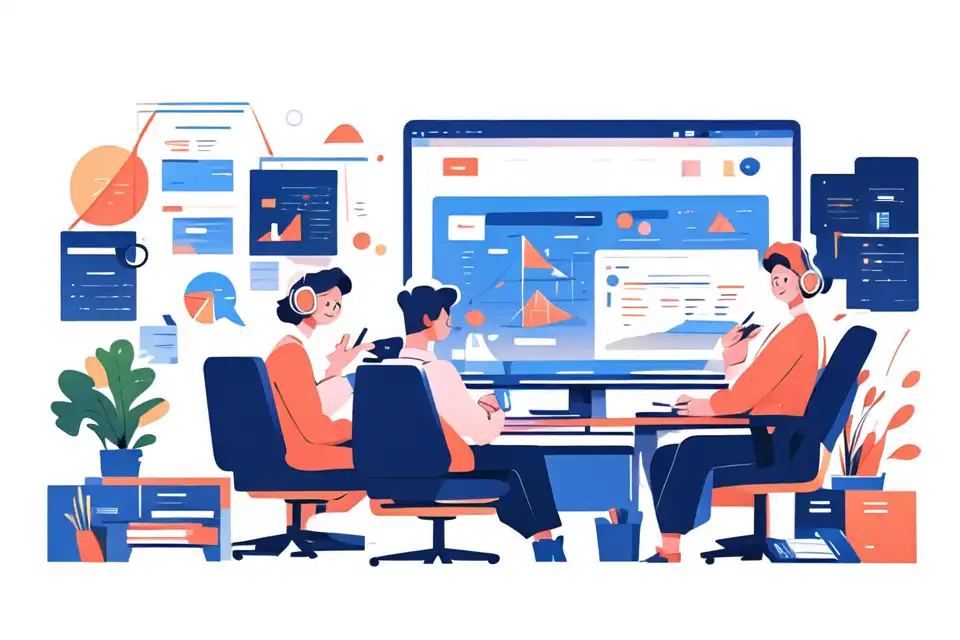Educational Blogging Platforms
Learn about the top tips and strategies in educational blogging platforms
Try Lark for Free
Understanding Educational Blogging Platforms
Educational blogging platforms are web-based interfaces that allow students and educators to share content, engage in discussions, and collaborate on projects. They support a variety of multimedia content such as text, images, videos, and hyperlinks. These platforms provide an interactive learning environment, fostering critical thinking, creativity, and digital literacy among students.
The Rise of Educational Blogging Platforms
With the onset of the digital age, the traditional classroom setting has been expanding beyond the four walls. According to a study by eSchool News, more than 90% of teachers believe that educational technology can improve student learning outcomes. This has led to a surge in the popularity of educational blogging platforms. They provide a flexible, accessible, and engaging learning environment that caters to the needs of the digital generation.
Unlock the power of Lark to elevate your business operations. Discover actionable strategies and best practices in our comprehensive guide.
The power and potential of educational blogging platforms
Enhancing Teaching and Learning
Educational blogging platforms provide a plethora of opportunities to enhance teaching and learning. They offer a collaborative space where educators can share resources, assignments, and feedback, and students can showcase their work, engage in discussions, and learn at their own pace. These platforms promote active learning, where students are not just passive receivers of information, but active participants in their learning journey.
Boosting Student Engagement and Performance
By providing a platform for students to express their ideas and opinions, educational blogging platforms can significantly boost student engagement. Furthermore, they facilitate peer feedback and collaboration, promoting a sense of community and mutual respect among students. Such high levels of engagement can lead to improved academic performance and a deeper understanding of the subject matter.
Learn more about Lark can help you with everything mentioned so far in the article.
Implementation of educational blogging platforms in education
Steps to Integration
Integrating educational blogging platforms into the curriculum is a step-by-step process that starts with defining the learning objectives, selecting a suitable platform, designing the curriculum, training the educators, and finally, launching the platform. It is crucial to provide continuous support and feedback to students and educators to ensure successful integration.
Necessary Tools and Resources
Successful implementation of educational blogging platforms requires certain tools and resources. This includes a stable internet connection, digital devices such as computers or tablets, and digital literacy skills. Moreover, educators need to be trained on how to use these platforms effectively to facilitate learning.
Real-world applications and success stories
Case study 1: boosting student engagement with blogs
Case study 1: boosting student engagement with blogs
A primary school in California integrated educational blogging into their curriculum. The teachers noticed a significant increase in student engagement, participation, and motivation. The platform allowed students to share their work, engage in discussions, and receive feedback from their peers, thereby creating a vibrant learning community.
Case study 2: promoting collaborative learning with blogs
Case study 2: promoting collaborative learning with blogs
A high school in New York used educational blogging platforms to facilitate collaborative learning. Students were assigned group projects where they had to collaborate and share their work on the blogging platform. This not only improved their teamwork and communication skills but also their understanding of the subject matter.
Case study 3: enhancing digital literacy with blogs
Case study 3: enhancing digital literacy with blogs
A college in London used educational blogging platforms to enhance digital literacy among students. By regularly posting blogs, students improved their digital skills, learned to evaluate online resources, and understood the implications of digital footprints.
Learn more about Lark can help you with everything mentioned so far in the article.
Overcoming challenges and maximizing success
Identifying Potential Obstacles
While educational blogging platforms offer numerous benefits, they also come with certain challenges. These include issues related to digital access, privacy and security concerns, and resistance from educators and students. It's important to identify these potential obstacles in the early stages to ensure successful implementation.
Strategies for Success
Overcoming these challenges requires strategic planning and implementation. This includes providing necessary digital resources, ensuring safe and secure use of the platform, and providing training and support to educators and students. Regular feedback and evaluation can also help in identifying areas of improvement and maximizing success.
The future of educational blogging platforms in education
Emerging Trends
The future of educational blogging platforms looks promising, with emerging trends such as gamification, personalized learning, and augmented reality integration, which aim to make learning more engaging, enjoyable, and effective.
Predictions for the Future
As technology continues to evolve, educational blogging platforms are expected to become an integral part of the education system. They will not only facilitate learning but also prepare students for a digital future by enhancing their digital literacy, communication, and collaboration skills.
Learn more about Lark can help you with everything mentioned so far in the article.
Do's and don'ts of using educational blogging platforms
| Do's | Don'ts |
|---|---|
| Do start by defining clear learning objectives. | Don't forget to provide continuous support and feedback. |
| Do provide necessary digital resources. | Don't overlook privacy and security concerns. |
| Do train educators on effective use of the platform. | Don't ignore resistance from educators and students. |
| Do encourage student participation and engagement. | Don't expect immediate results. |
Related:
Education Solution | LarkLearn more about Lark can help you with everything mentioned so far in the article.
Conclusion
Educational blogging platforms are revolutionizing the way education is delivered. They offer numerous benefits, including enhancing teaching and learning, boosting student engagement and performance, and preparing students for a digital future. Despite the challenges, with effective strategies, educational institutions can successfully integrate these platforms into their curriculum and transform the learning experience for students. As we look towards the future, it's clear that educational blogging platforms will play a pivotal role in shaping the future of education.
Unlock the power of Lark to elevate your business operations. Discover actionable strategies and best practices in our comprehensive guide.








